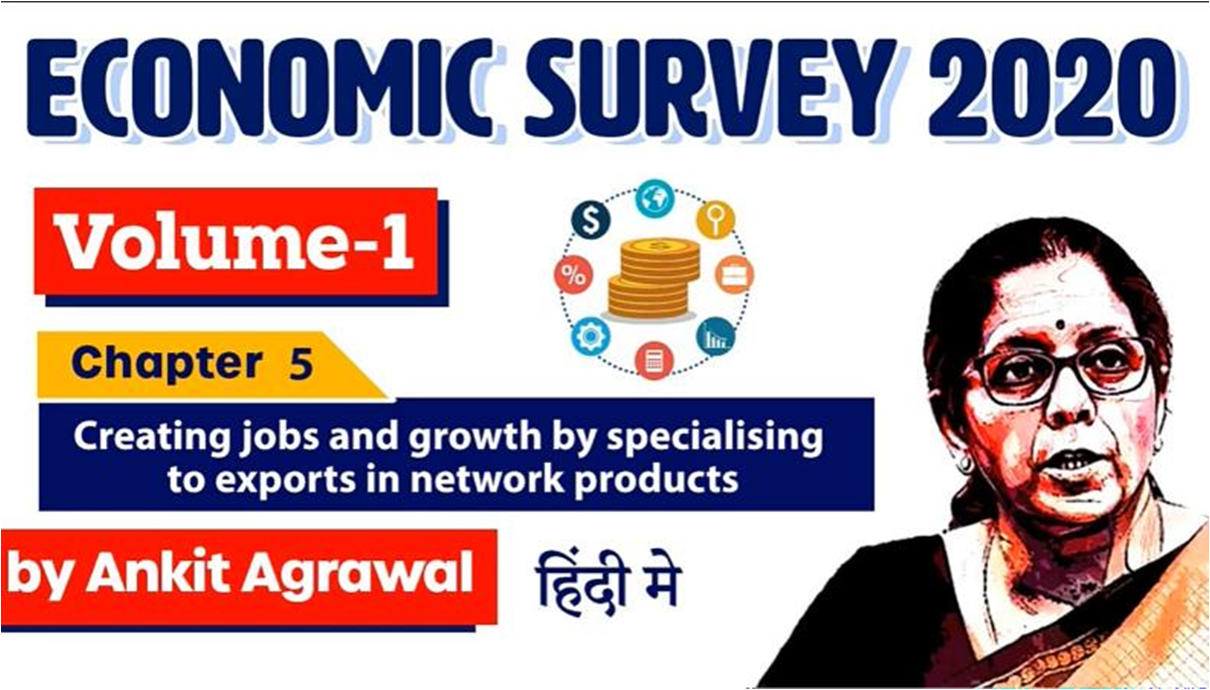Table of Contents

INTRODUCTION
- Growth in exports provides a much needed pathway for job creation in India.
- For instance, in just the five year period 2001-2006, labour- intensive exports enabled China to create 70 million jobs for workers with primary education.
- The US–China trade war is causing major adjustments in Global Value Chains (GVCs).

- Firms are now looking for alternative locations for their operations.
- China’s image as a low-cost location for final assembly of industrial products is rapidly changing due to labour shortages and increases in
- These developments present India an unprecedented opportunity to chart a similar export trajectory as that pursued by China.
- Through it, we can create unparalleled job opportunities for its

SHARE OF EXPORTS IN CHINA’S GDP
- India’s share in world exports has increased from 0.6% in 1991 to 1.7% in 2018.
- Yet, even by 2018, India’s world market share remains paltry compared to 12.8% for China.
KEY QUESTIONS THAT ARISE
- What type of policy interventions would help achieve faster export growth?
- Should policies target export growth through specialization or diversification?
- Is it in our interest to promote strong local linkages for domestic industries or to participate in GVCs wherein linkages are globally dispersed?
- Which are the industries that hold the greatest potential for export growth and employment generation?
- Are free trade agreements beneficial to India?
- By addressing these questions,
- This chapter lays out the policy map to achieve sustained and faster export growth and thereby well-paid jobs.
IMPORTANT FINDINGS WHEN COMPARING INDIA & CHINA IN TERMS OF EXPORTS
- China-India gap in world market share is almost fully driven by the effect of specialization.

- China-India gap with respect to specialization has been fully driven by the quantity effect.

- The bottom line is that-
- If India wants to become a major exporter,
- It should specialize more in the areas of its comparative advantage and achieve significant quantity expansion.
- The fast growing commodities in India’s export basket are capital and skill intensive.
- In contrast, China’s export composition shows a strong bias towards traditional labourintensive industries.

- While capital-intensive products account for a higher share in
- China’s export basket than that of India’s,
- It is important to emphasize that,
- Exports of capital-intensive products from China expanded since 2000 after the country recorded a major export expansion, for nearly two decades (1980-2000).
- India’s market penetration in high-income countries is perceptibly low.


SUMMARY
- India has gained a competitive advantage in relatively low and middle income country markets but at the cost of losing the much bigger markets in richer countries.
- India can benefit significantly from utilising the potential opportunities from greater trade with high income markets.
- But this requires a reorientation of our trade specialization towards labour intensive product lines.
- This can be achieved both via selective focus on
- Traditional labour-intensive sectors such as textiles, especially man-made fibres.
- Increased participation in G
HOW INDIA CAN GAIN FROM GLOBAL VALUE CHAINS?

WHICH INDUSTRIES SHOULD INDIA SPECIALIZE IN FOR JOB CREATION?
- There are two groups of industries that hold the greatest potential for export growth and job creation:-
- First, in India’s traditional unskilled labour-intensive industries such as textiles, clothing, footwear and toys.
- Developed countries concentrate in higher value added activities such as design, branding and marketing.
- Physical production is carried out by firms in developing countries
- Second, India has huge potential to emerge as a major hub for final assembly in a range of products, referred to as “network products”.
- The GVCs in these industries are controlled by leading MNEs such as Apple, Samsung, Sony
- The lead firms retain skill & knowledge-intensive stages of production in high-income headquarters (e.g., the U.S.A, E.U and Japan)
- But locate assembly related activities in low wage countries (e.g., China and Vietnam)
POTENTIAL GAINS IN EMPLOYMENT AND GDP
- India can create-
- 4 crore well-paid jobs by 2025 & 8 crore by 2030
ARE FREE TRADE AGREEMENTS BENEFICIAL?



Economic Survey | Free PDF






















 WhatsApp
WhatsApp